Increase in Productivity of Chestnut Soils on Irrigated Lands of Northern and Central Kazakhstan
Abstract
1. Introduction
2. Materials and Methods
3. Results
4. Discussion
5. Conclusions
- The climatic conditions of northern and central Kazakhstan are characterized by aridity and strong winds, and the probability of dry years is 38%. The negative impact of drought depends on its duration and moisture level in the soil. Deep loosening and plowing of soils to a depth of 30 cm increase the accumulation of precipitation and meltwater in the soil by 10–15% higher than normal plowing or disking;
- On irrigated lands with deep loosening and plowing, the yield of grain crops is 2.6–2.8 t/ha; vegetable crops, 35.1–40.2 t/ha; carrots, 35.0–40.0 t/ha; table beet, 25.0–27.5 t/ha; cabbage, 50.0–70.0 t/ha; and potatoes, 23.2–24.1 t/ha. With a soil moisture of 70% MC, four irrigations are carried out in an average dry year and two irrigations are carried out in a wet year; the watering rate is 300–470 m3/ha and the irrigation rate is 550–1490 m3/ha. Irrigation of irrigated lands is carried out by sprinkling: DDA-100MA, frigate, irrigation pipes to local water sources, and water intake from the Irtysh-Karaganda canal;
- As a result of the study, energy-efficient reclamation technology has been identified to increase soil fertility and crop yields in chestnut soils of irrigated lands in northern and central Kazakhstan. Soil water permeability directly depends on its tillage, and loosening and plowing the soil deeper than 25–30 cm ensures rapid absorption of melt, rain, irrigation water and eliminates surface runoff, as well as surface moisture in irrigation. It also prevents the negative effects of drought on chestnut soils of irrigated land and maintains moisture by preventing prolonged dryness.
Author Contributions
Funding
Institutional Review Board Statement
Informed Consent Statement
Data Availability Statement
Acknowledgments
Conflicts of Interest
References
- Saparov, A. Soil Resources of the Republic of Kazakhstan: Current Status, Problems and Solutions. In Novel Measurement and Assessment Tools for Monitoring and Management of Land and Water Resources in Agricultural Landscapes of Central Asia; Springer: Berlin/Heidelberg, Germany, 2014; pp. 61–73. [Google Scholar] [CrossRef]
- Tokbergenova, A.; Kiyassova, L.; Kairova, S. Sustainable Development Agriculture in the Republic of Kazakhstan. Pol. J. Environ. Stud. 2018, 27, 1923–1933. [Google Scholar] [CrossRef] [PubMed]
- Kabzhanova, G.; Baktybekov, K.; Aimbetov, A.; Kurmasheva, A.; Kabdulova, G. Remote monitoring of the main types of soil in Northern Kazakhstan. In Proceedings of the Seventh International Conference on Remote Sensing and Geoinformation of the Environment (RSCy2019), Paphos, Cyprus, 18–21 March 2019; SPIE: Washington, DC, USA, 2019; Volume 11174, pp. 224–230. [Google Scholar] [CrossRef]
- Kulymbet, K.K.; Kukhitdinov, N.M.; Saduakhas, A.B.; Tastanbekova, A.A. Soil Moisture of Cenopopulations Adonis Tianschanica Lipsch (Adolf). In Proceedings of the Kungei and Terskey Alatau, Modern problems of biotechnology: From the laboratory researches to production, dedicated to the 80th anniversary of outstanding scientist, microbiologist, academician of Kazakhstan National Academy of Natural Sciences, the best teacher of the university, 2007, doctor of biological sciences, professor Zhubanova Azhar Akhmetovna. Almaty, Kazakhstan, 4–5 June 2021; pp. 90–95. [Google Scholar]
- Abeuov, S.; Ermokhin, Y.; Shoykin, O.; Kamkin, V. Diagnosis of Potatoes’s Requirements for Nitrogen Fertilizers on Chestnut Soils of Northern Kazakhstan. In Proceedings of the International Scientific Conference, Fifth Technological Order: Prospects for the Development and Modernization of the Russian Agro-Industrial Sector (TFTS 2019), Omsk, Russia, 15 October 2019; Atlantis Press: Dordrecht, The Netherlands, 2020; pp. 450–453. [Google Scholar] [CrossRef]
- Karabayev, M.; Suleimenov, M. Adoption of Conservation Agriculture in Kazakhstan. Plenary Session, 243. 2019. Available online: http://www.irancan.org/wp-content/uploads/2021/01/4th-World-Congress-on-CA-India-4-7-Feb-2009.pdf#page=249 (accessed on 21 January 2023).
- Kostyakov, A.N. Selected Works. Moscow, Selkhozgiz. 1961, p. 807. Available online: https://search.rsl.ru/ru/record/01005683296?ysclid=lf0qoslzit788375808 (accessed on 22 January 2023).
- Koibakov, B.M. Irrigation in Northern and Central Kazakhstan. Almaty, Intelservice. 2000, p. 245. Available online: http://www.spsl.nsc.ru/ (accessed on 23 January 2023).
- Golovanov, A.I. Land Reclamation. Moscow, Colossus. 2011, p. 431. Available online: https://rusneb.ru/catalog/000199_000009_005026145/?ysclid=lf0qvl29x9178988816 (accessed on 25 February 2023).
- Shabanov, V.V. Moisture Availability of Spring Wheat and Its Calculation. Leningrad, Gidrometeoizdat. 1981, p. 145. Available online: http://elib.timacad.ru/dl/full/f42.pdf/download/f42.pdf?ysclid=lf0r66cpjg541220800 (accessed on 2 February 2023).
- Matyshuk, I.V. Cultivation and Fertility of Chestnut Soils of Central Kazakhstan; Academy of Sciences of the Kazakh SSR: Alma-Ata, Kazakhstan, 1962; p. 165. [Google Scholar]
- Baraev, A.I. The System of Soil Treatment on the Newly Developed Lands of Kazakhstan; M. Agricultural Publishing House: Alma-Ata, Kazakhstan, 1958. [Google Scholar]
- Zaitseva, A.A. Spring Wheat in Acutely Arid Areas; M. Agricultural Publishing House: Moscow, Russia, 1957. [Google Scholar]
- Ganusova, T.I.; Gusak, V.S. Effect on Phosphate Regime of Chestnut Soils of North Kazakhstan and Yield of Spring Wheat. Agrokhimiya 1970, 12, 22–29. Available online: https://www.cabdirect.org/cabdirect/abstract/19711903578 (accessed on 21 January 2023).
- Dokuchaev, V.V. Essays. Moscow, From the USSR Academy of Sciences, 1961. Available online: https://search.rsl.ru/ru/record/01005619705?ysclid=lf0ty3utwm74250606 (accessed on 11 February 2023).
- Kirnos, G.V. Issues of Tillage in the Arid Zone of Northern Kazakhstan. Agrobiology 1956, 2, 163. Available online: https://www.eruditor.io/file/1901705/?ysclid=lf0ulrz4q6265426517 (accessed on 14 February 2023).
- Oshakbaeva, Z. Meliorative Soil Science. Almaty, Evero, 2018. p. 188. Available online: http://rmebrk.kz/test/listinlist?page=3190&ysclid=lf0y4j9ued754079680 (accessed on 20 February 2023).
- Toksanbaeva, S.T.; Ramazanova, N.E.; Tusupbekov, Z.A. Current State and Prospects for the Development of Agricultural Land in the Nura River Basin. In IOP Conference Series: Earth and Environmental Science; IOP Publishing: Bristol, UK, 2022; Volume 954, p. 012087. [Google Scholar] [CrossRef]
- Rusanov, A.M.; Anilova, L.V. Fundamentals of Soil Science: Methodological Guidelines. 2010. Available online: http://elib.osu.ru/handle/123456789/7982 (accessed on 21 January 2023).
- Jerlov, N.G. Marine Optics; Elsevier Oceanography Series: Amsterdam, The Netherlands, 1976. [Google Scholar]
- Maltsev, T.S. A New Tillage System and Its Efficiency. Kurgan, Red Kurgan, 1954. p. 60. Available online: https://search.rsl.ru/ru/record/01005835068?ysclid=lf0v8wkiu8493609994 (accessed on 21 February 2023).
- Sokolov, V.N. Problems of sustainable development of rural regions of Canada. USA Can. Econ. Politics Cult. 2003, 12, 101–113. Available online: https://usacanada.jes.su/?sl=en (accessed on 21 January 2023).
- Budyko, M.I. Climate and life. Leningrad, Gidrometeoizdat, 1971. p. 470. Available online: https://e-catalog.nlb.by/Record/BY-NLB-rr38052320000 (accessed on 23 February 2023).
- Timiryazev, K.A. Selected Essays. Moscow, Selkhozgiz, 1948. p. 474. Available online: http://e-kitap.kz/book/3698 (accessed on 25 February 2023).
- Shukla, K. Soil micronutrient pools and their transfer to paddy-crops in semiarid agro-ecosystems, Central India. Soil Tillage Res. 2018, 180, 164–174. [Google Scholar] [CrossRef]
- Wang, X.L.; Jia, Y.; Li, X.G.; Long, R.J.; Ma, Q.; Li, F.M.; Song, Y.J. Effects of land use on soil total and light fraction organic, and microbial biomass C and N in a semiarid ecosystem of northwest China. Geoderma 2009, 153, 285–290. [Google Scholar] [CrossRef]
- Wang, M.Y.; Li, J.; Sun, J.; Wang, X.C.; Fang, X.Y.; Ren, J.J. Soil desiccation characteristics of alfalfa grasslands and soil water restoration effects in alfalfa-grain crop rotations on the semiarid areas of the loess plateau. Shengtai Xuebao/Acta Ecol. Sin. 2009, 29, 4526–4534. [Google Scholar]
- Samaddar, S.; Schmidt, R.; Tautges, N.E.; Scow, K. Adding alfalfa to an annual crop rotation shifts the composition and functional responses of tomato rhizosphere microbial communities. Appl. Soil Ecol. 2021, 167, 104102. [Google Scholar] [CrossRef]
- Khakbazan, M.; Mohr, R.M.; Huang, J.; Xie, R.; Volkmar, K.M.; Tomasiewicz, D.J.; Nelson, A. Effects of crop rotation on energy use efficiency of irrigated potato with cereals, canola, and alfalfa over a 14-year period in Manitoba, Canada. Soil Tillage Res. 2019, 195, 104357. [Google Scholar] [CrossRef]

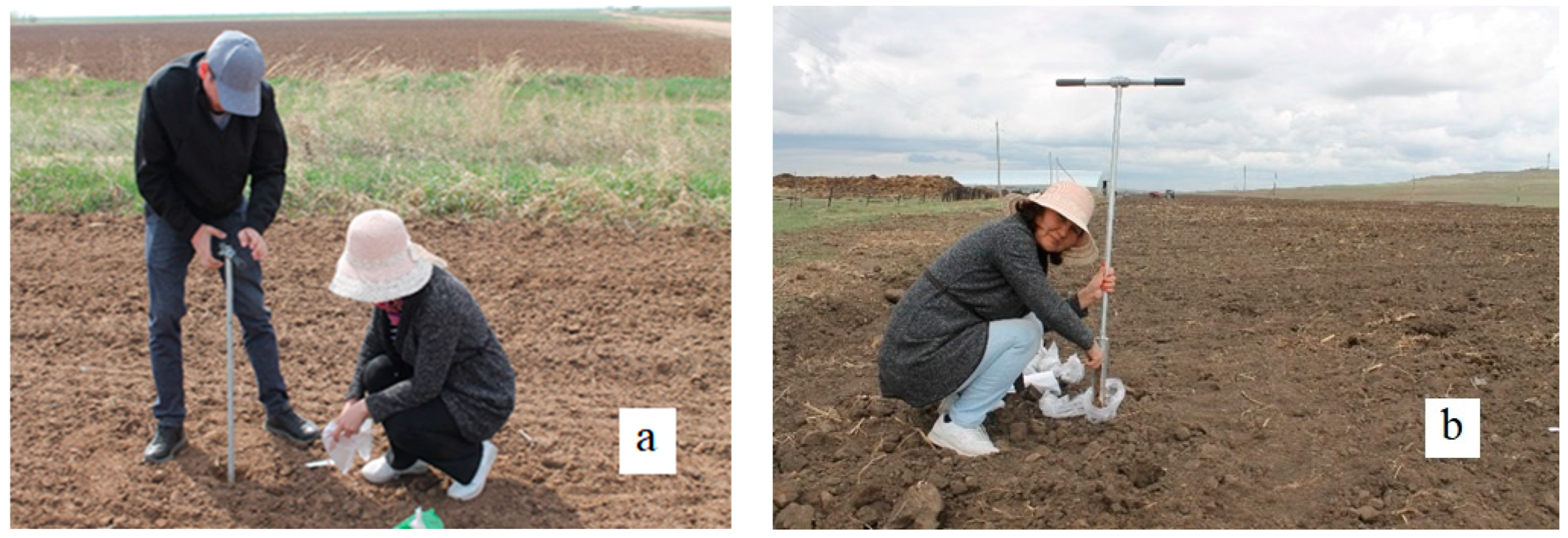
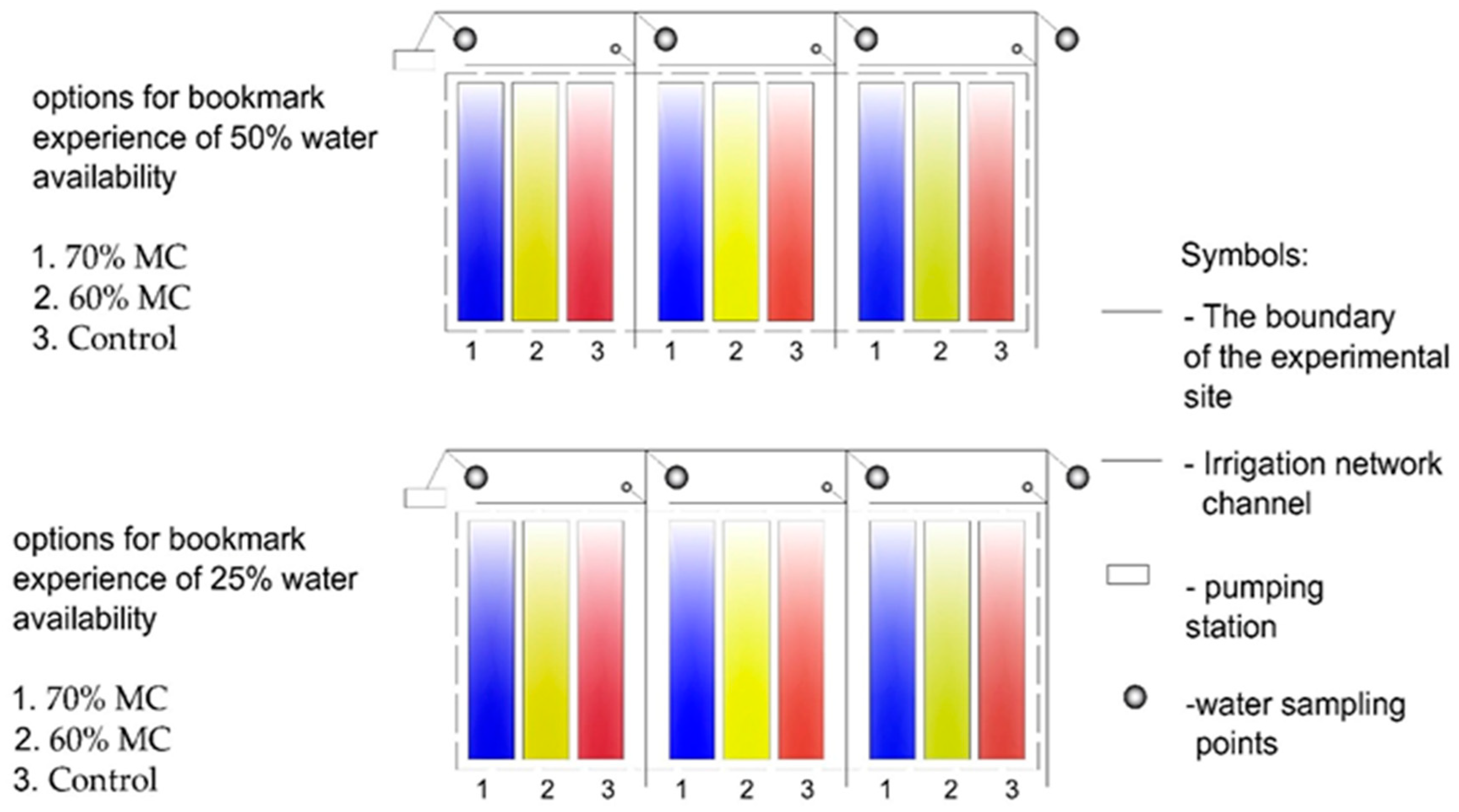
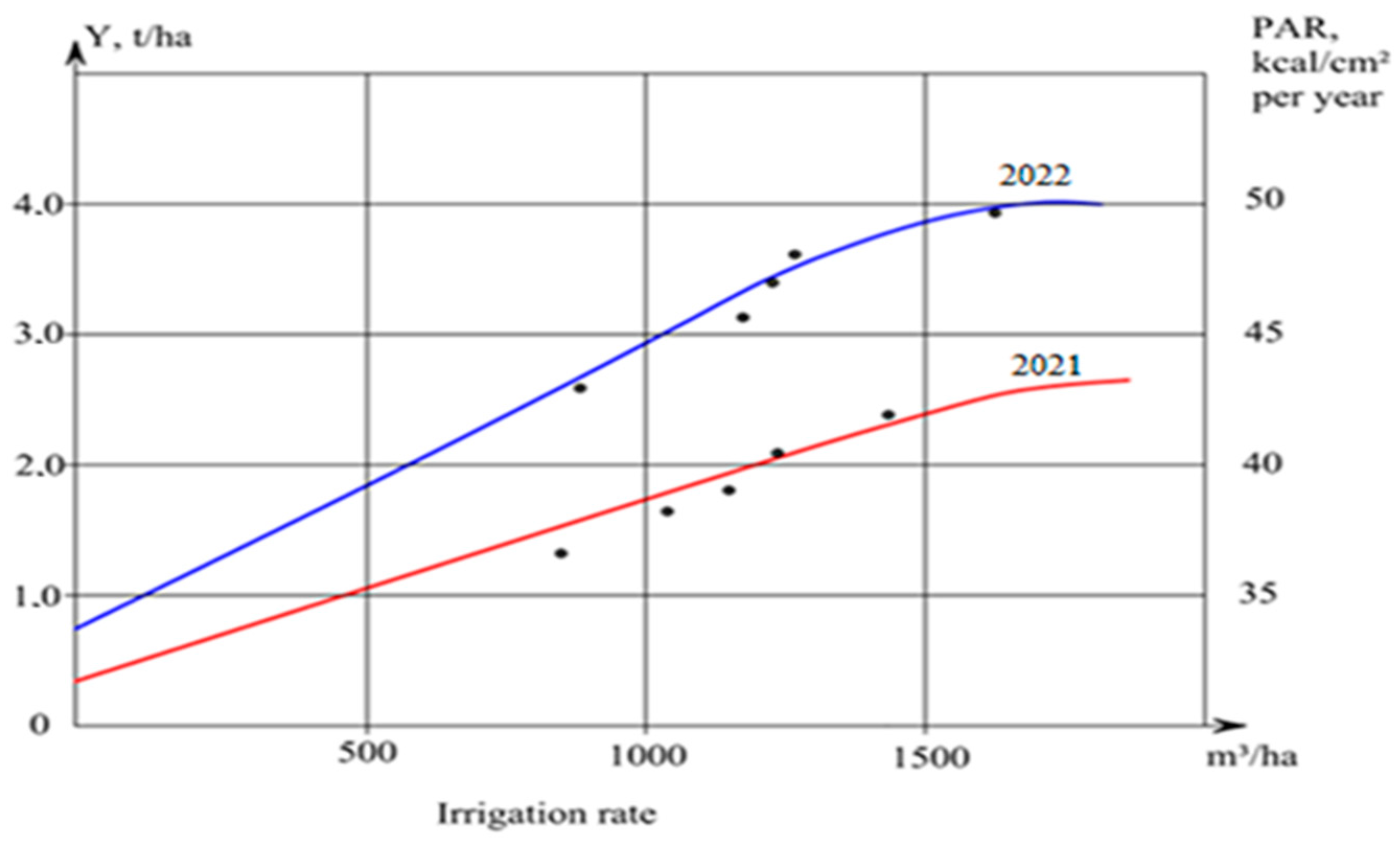
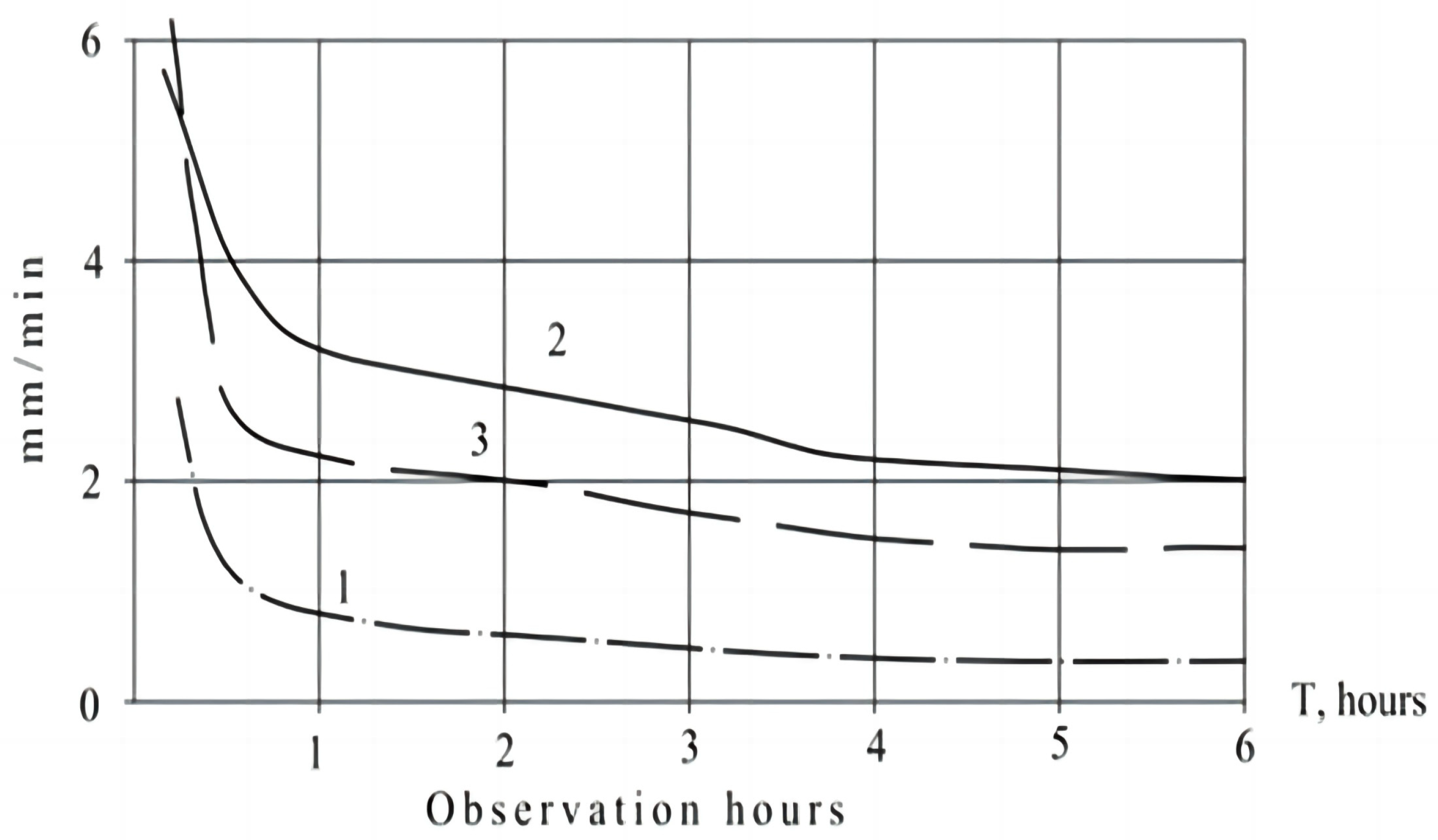
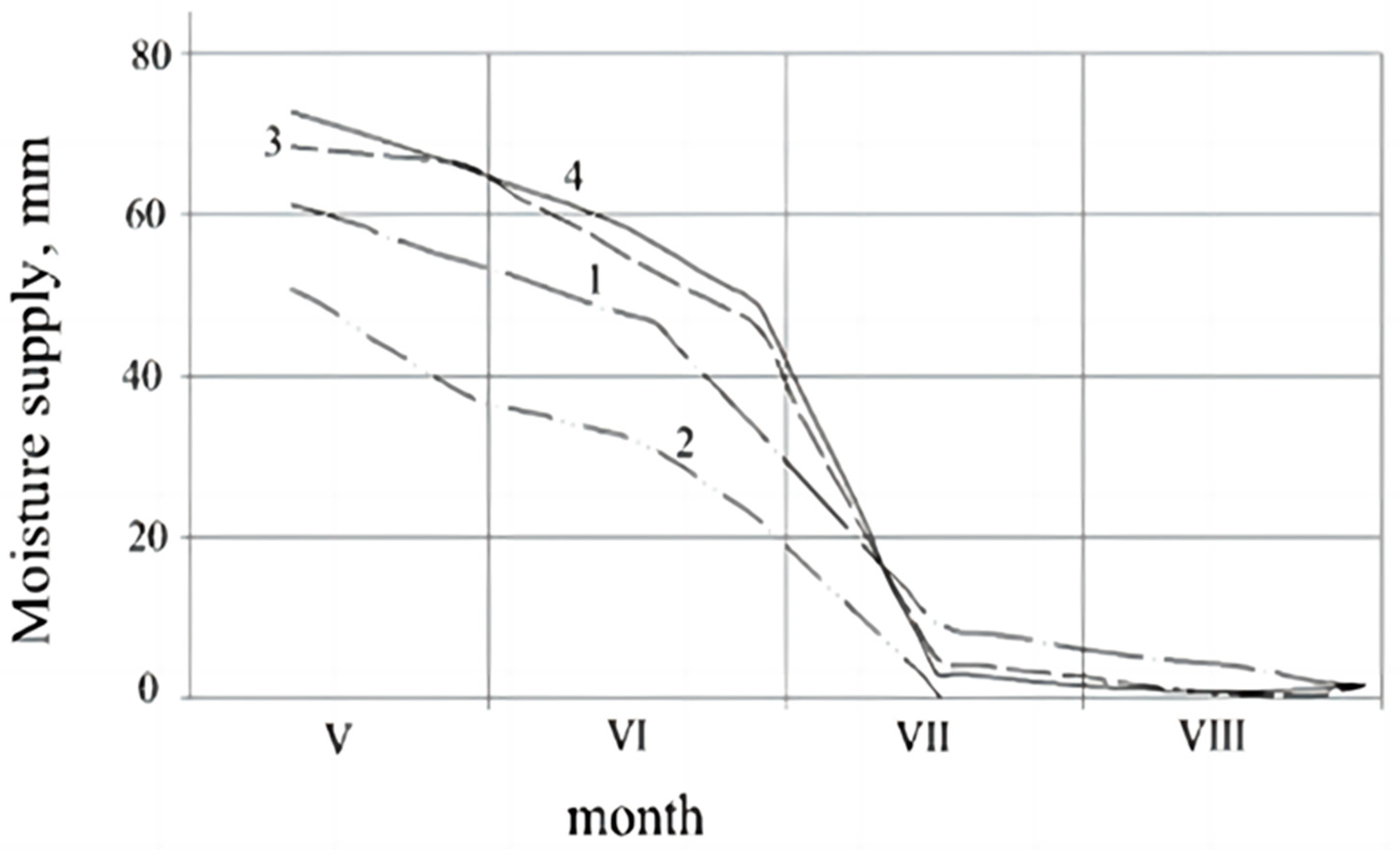
| Years | Vegetables | Carrot | Table Beet | Cabbage | Potatoes | |||||
|---|---|---|---|---|---|---|---|---|---|---|
| Area Hectare | Yield t/ha | Area Hectare | Yield t/ha | Area Hectare | Yield t/ha | Area Hectare | Yield t/ha | Area Hectare | Yield t/ha | |
| 2021 | 102 | 40.2 | 90 | 40.0 | 8 | 25.0 | 4 | 75.0 | 28.8 | 23.2 |
| 2022 | 103.3 | 35.1 | 90 | 35.0 | 9 | 27.5 | 4 | 50.0 | 27.8 | 24.1 |
| % Humidity Sufficiency | Experimental Variants | Elements of Water Balance, mm | Actual Evapotranspiration, mm | Yield, t/ha | Water Consumption for the Formation of a Unit of Production, m3/t | ||||
|---|---|---|---|---|---|---|---|---|---|
| Precipitation | Irrigation rate | Soil Moisture Reserve | The Amount of Groundwater Use | Total Water Consumption | Irrigation Water | ||||
| 50 | 70% MC | 116.7 | 149 | 10 | 41 | 317 | 2.6 | 1270 | 600 |
| 60% MC | 116.7 | 125 | 21 | 39 | 300 | 2.3 | 1360 | 570 | |
| Control | 116.7 | - | 79 | 28 | 215 | 1.1 | 1950 | - | |
| 25 | 70% MC | 200 | 55 | 67 | 48 | 370 | 2.8 | 1320 | 200 |
| 60% MC | 200 | 40 | 69 | 46 | 355 | 2.7 | 1310 | 150 | |
| Control | 200 | - | 73 | 41 | 314 | 1.5 | 1960 | - | |
| % Humidity Sufficiency | Prior to Irrigation Humidity Threshold, % | Number of Irrigations on MC | Number of Days between Irrigations | Irrigation Volume and Date | Irrigation Rate, m3/ha | |||
|---|---|---|---|---|---|---|---|---|
| 1 | 2 | 3 | 4 | |||||
| 25% (wet year) | 70 60 | 2 1 | 11 | 300 11.06 400 12.06 | 250 22.06 - | - - | - - | 550 400 |
| 50% (average year) | 70 60 | 4 2 | 15–17 18 | 360 6.06 650 26.06 | 470 23.06 600 | 360 8.07 | 300 23.07 | 1490 1250 |
Disclaimer/Publisher’s Note: The statements, opinions and data contained in all publications are solely those of the individual author(s) and contributor(s) and not of MDPI and/or the editor(s). MDPI and/or the editor(s) disclaim responsibility for any injury to people or property resulting from any ideas, methods, instructions or products referred to in the content. |
© 2023 by the authors. Licensee MDPI, Basel, Switzerland. This article is an open access article distributed under the terms and conditions of the Creative Commons Attribution (CC BY) license (https://creativecommons.org/licenses/by/4.0/).
Share and Cite
Rau, A.; Koibakova, Y.; Nurlan, B.; Nabiollina, M.; Kurmanbek, Z.; Issakov, Y.; Zhu, K.; Dávid, L.D. Increase in Productivity of Chestnut Soils on Irrigated Lands of Northern and Central Kazakhstan. Land 2023, 12, 672. https://doi.org/10.3390/land12030672
Rau A, Koibakova Y, Nurlan B, Nabiollina M, Kurmanbek Z, Issakov Y, Zhu K, Dávid LD. Increase in Productivity of Chestnut Soils on Irrigated Lands of Northern and Central Kazakhstan. Land. 2023; 12(3):672. https://doi.org/10.3390/land12030672
Chicago/Turabian StyleRau, Alexey, Yelzaveta Koibakova, Balgabayev Nurlan, Madina Nabiollina, Zhanymhan Kurmanbek, Yerlan Issakov, Kai Zhu, and Lóránt Dénes Dávid. 2023. "Increase in Productivity of Chestnut Soils on Irrigated Lands of Northern and Central Kazakhstan" Land 12, no. 3: 672. https://doi.org/10.3390/land12030672
APA StyleRau, A., Koibakova, Y., Nurlan, B., Nabiollina, M., Kurmanbek, Z., Issakov, Y., Zhu, K., & Dávid, L. D. (2023). Increase in Productivity of Chestnut Soils on Irrigated Lands of Northern and Central Kazakhstan. Land, 12(3), 672. https://doi.org/10.3390/land12030672







